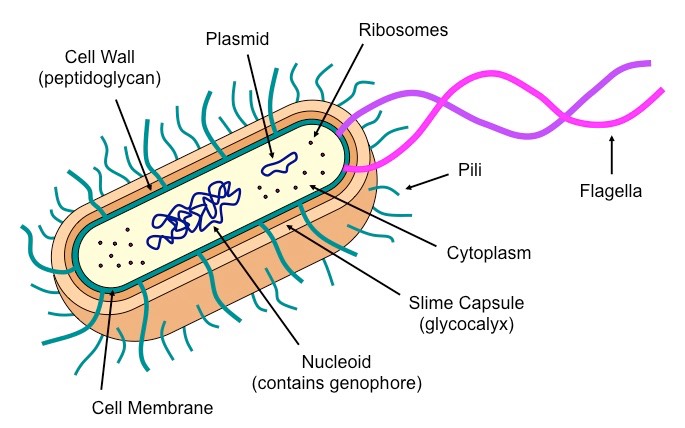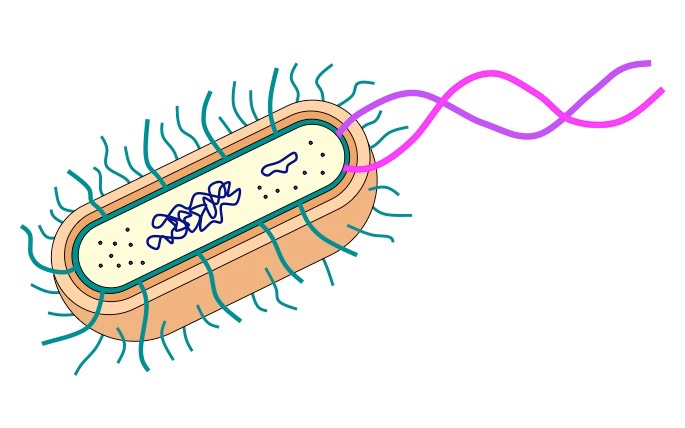![]()
Understanding:
• Prokaryotes have a simple cell structure without compartmentalisation
Prokaryotes are organisms whose cells lack a nucleus ('pro' = before ; 'karyon' = nucleus)
They belong to the kingdom Monera and have been further classified into two distinct domains:
- Archaebacteria – found in extreme environments like high temperatures, salt concentrations or pH (i.e. extremophiles)
- Eubacteria – traditional bacteria including most known pathogenic forms (e.g. E. coli, S. aureus, etc.)
Prokaryotic Features
Prokaryotic cells will typically contain the following cellular components:
- Cytoplasm – internal fluid component of the cell
- Nucleoid – region of the cytoplasm where the DNA is located (DNA strand is circular and called a genophore)
- Plasmids – autonomous circular DNA molecules that may be transferred between bacteria (horizontal gene transfer)
- Ribosomes – complexes of RNA and protein that are responsible for polypeptide synthesis (prokaryote ribosome = 70S)
- Cell membrane – Semi-permeable and selective barrier surrounding the cell
- Cell wall – rigid outer covering made of peptidoglycan; maintains shape and prevents bursting (lysis)
- Slime capsule – a thick polysaccharide layer used for protection against dessication (drying out) and phagocytosis
- Flagella – Long, slender projections containing a motor protein that enables movement (singular: flagellum)
- Pili – Hair-like extensions that enable adherence to surfaces (attachment pili) or mediate bacterial conjugation (sex pili)


⇒ Click on the diagram to show / hide labels
![]()
Application:
• Prokaryotes divide by binary fission
Binary fission is a form of asexual reproduction used by prokaryotic cells
In the process of binary fission:
- The circular DNA is copied in response to a replication signal
- The two DNA loops attach to the membrane
- The membrane elongates and pinches off (cytokinesis), forming two cells
Overview of Binary Fission and Rate of Bacterial Growth

